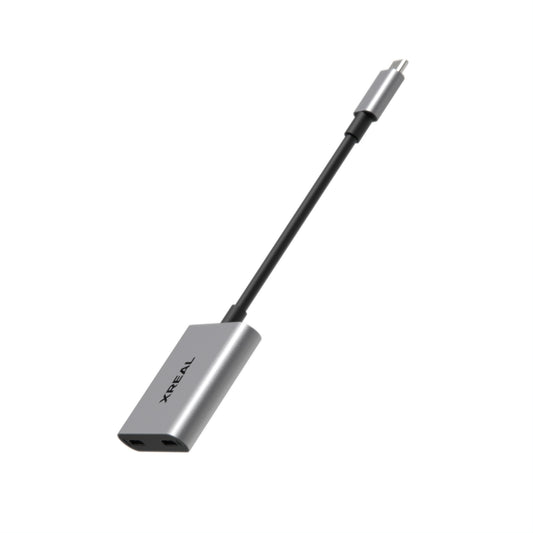User Guide_XREAL One Series
|

Couldn't load pickup availability
|
👓: One end of the cable’s elbow connector attaches to the glasses, allowing you to lie down comfortably.
Ensure that your device’s port supports DP video output via Type-C.
Although the lens fitting process may be a bit cumbersome, it's well worth it for those with vision issues, as it ensures clear vision and better eye protection.
👓: The lens frame models differ among the XREAL One, One Pro, Air 2 series, and Air.
The One series offers three types of nose pads:
👓: You can fine-tune the fit by adjusting the metal frame.
Adjust the temple angles through three settings to ensure the glasses fit your eyes and ears perfectly, delivering a complete display.
The buttons are located on the top and bottom of the right temple.
The electrochromic function provides a richer immersive experience in various lighting conditions.
The system offers two screen modes: Anchor and Follow. Simply click the X Button to switch between these modes.
These two mode settings will be saved until the next use.
Every time you connect your device, the default display is set to a 16:9 screen.
👓: Requires compatible 3D content and the VLC Player app.
👓: In Anchor mode, it is recommended to set the screen slightly smaller than the FOV edge (to avoid any part of the screen being cut off). For example, when using the XREAL One at a 4m distance, adjust the screen size to 117 inches (80% FOV).
👓: In DP Mode, the connected device cannot adjust the volume; please adjust it via the main menu > Sound interface > Volume.
Sometimes the virtual image may appear blurry, incomplete, or cause eye strain, which could be due to a mismatch in the IPD. For a more comfortable experience, we recommend adjusting the device's IPD to match your own.
The default mapping between the physical +/- Button on the temple and the on-screen controls may feel less intuitive or smooth for some users, similar to how some users initially struggle with the default mapping of Apple's mouse.
To address this, a one-touch reversal feature is available to flip the mapping between the physical buttons and the menu interface.
When using the second or third level of the electrochromic mode, or when the screen is in hover mode, enabling this feature will automatically make the surrounding environment transparent when you look away from the screen.













































